I read an article in today’s NY Times about a lawsuit against a New York street photographer who captured the image of an Orthodox Jew and used it in a photographic exhibition without the man’s permission:
In 1999 Philip-Lorca diCorcia set up his camera on a tripod in Times Square…and in the time-honored tradition of street photography, took a random series of pictures of strangers passing under his lights. The project continued for two years, culminating in an exhibition of photographs called “Heads” at Pace/MacGill Gallery in Chelsea…
When Erno Nussenzweig, an Orthodox Jew and retired diamond merchant from Union City, N.J., saw his picture last year in the exhibition catalog, he called his lawyer. And then he sued Mr. diCorcia and Pace for exhibiting and publishing the portrait without permission and profiting from it financially.
…In his lawsuit, Mr. Nussenzweig argued that use of the photograph interfered with his constitutional right to practice his religion, which prohibits the use of graven images.
I find myself deeply torn by this story. Of course, like the Times and many of its readers I come down squarely on the side of artistic expression in this case. I believe the artist had the right legally to take the image and use it artistically as he did.
But what I find shocking and offensive about both the Times’ coverage of the story and the photographer’s legal argument is that it makes absolutely no provision for the legitimate religious convictions of Mr. Nussenzweig. Now, I am not Orthodox and thus not compelled to shield myself from a photographer’s lens when I see it, as the latter is. But I am sensitive to the horror he must’ve felt when he saw his image on public display in the exhibition.
After all, Jewish law forbids the creation of “graven images” and interprets this to mean any image like a photograph that captures an individual’s physical likeness. The reason, as I understand it for this, is that Jewish law wishes to avoid any possibility that such images would themselves compete with the idea of the divine (“Thou shalt have no other gods before thee”). To understand the concept better, I found this interesting Wikipedia article on aniconism, or the avoidance of images (or “icons” in this case):
…Aniconism is [best] known in connection [with] Abrahamic religions…[It] was shaped by specific theological considerations and…emerged as a corollary of seeing God’s position as the ultimate power holder, and the need to defend this unique status against competing external and internal forces, such as pagan idols and critical humans. Idolatry is a threat to uniqueness, and one way that prophets…chose to fight it was through the prohibition [against] material representations. The same solution also worked against the pretension of humans to have the same power of creation as God (hence…the Second Commandment in the biblical texts…)
To summarize, Mr. Nussenzweig believes that his image diminishes the power and glory of his God. This of course must cause great pain to a person with such religious convictions. And my problem with the court’s decision, the photographer’s legal argument and the law in this matter is that it frankly couldn’t give a crap about Mr. Nussenzweig’s religious beliefs. And I think that’s a shame. I’m not arguing that the law should allow Orthodox Jews to prevent anyone from taking or exhibiting their picture. But would it hurt if the judge, Mr. diCorcia or his attorneys took this into account in some way and sincerely acknowledged the man’s pain? Here is all the judge could muster:
As for the religious claims, she said: “Clearly, plaintiff finds the use of the photograph bearing his likeness deeply and spiritually offensive. While sensitive to plaintiff’s distress, it is not redressable in the courts of civil law.”
While I’m in no way sympathetic to fundamentalist Christians who talk about a war between secular society and religious believers, I think that incidents like this one contribute to such a perception of persecution and lack of sensitivity to the needs of religious people.
Another interesting aspect of this issue is that diCorcia’s actual photographic image of Nussenzweig is elegant and tremendously powerful. It is a great testament to the living legacy of Hasidic Judaism which the latter lives every day. For that reason, I would love to feature it here. But I will not display it here (though the Times decided to do so) since I do not wish to compound Mr. Nussenzweig’s pain.

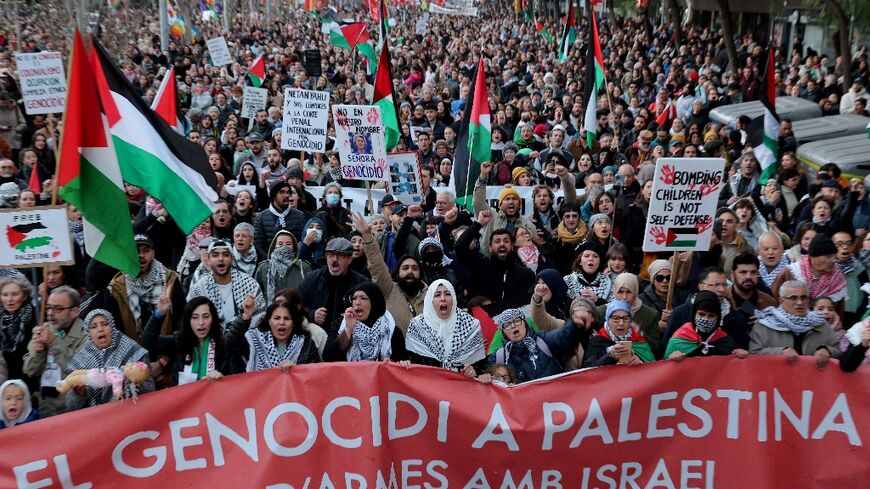

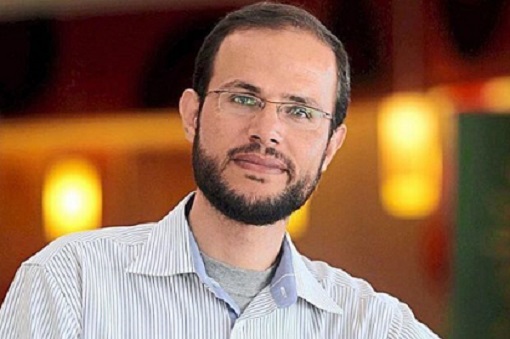
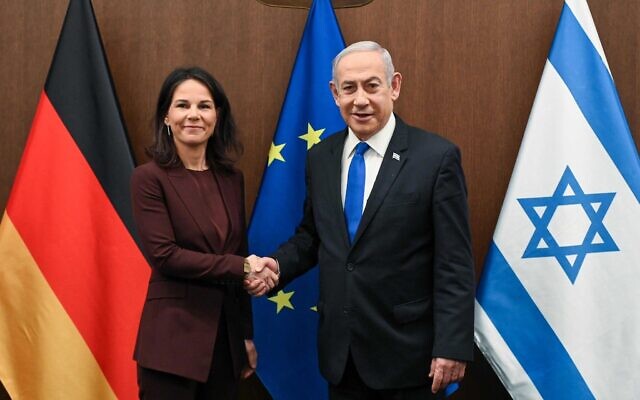

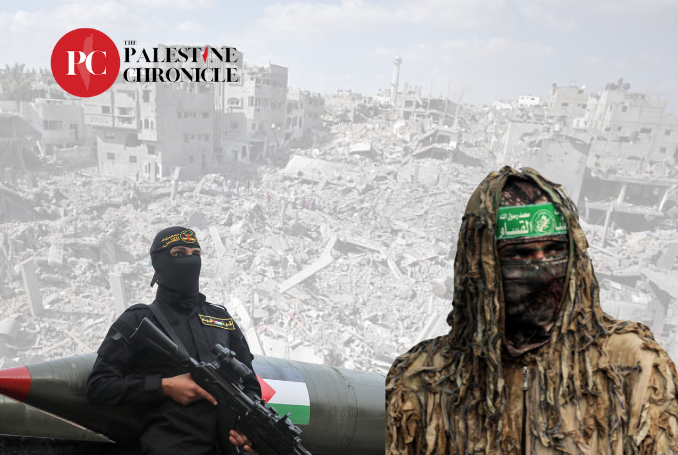
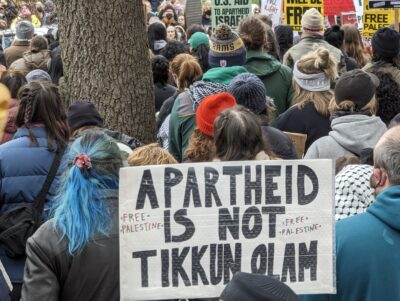
While it in no way diminshes this man’s distress at having his picture displayed, I wanted to point out that prohibiting any images of humans is far from a mainstream Orthodox viewpoint. In fact, I have never heard of it before in Judaism, despite considering myself to be a (modern) Orthodox Jew.
Members of many Hasidic sects display pictures of their Rebbe (spiritual leader) in prominent positions in their homes, maybe most famously the Lubavitchers who have also taken to putting up pictures of the late Menachem Mendel Schneerson almost everywhere (most street signs in Israel have a poster on the back). Interestingly, some modern Orthodox and Mitnagdim (non-Hasidic Haredim) accuse Hasidim of almost idol-worhip in their reveration for their Rebbe. Are you sure that the man in this case is a Hasid? If so, do you know which Hasidic sect he’s from?
The prohibition against photography is something I’ve know about going back several decades. I’m glad to hear that the view is not widespread in Orthodox Judaism. But it’s certainly widespread among Hasidim. And if you look at the Wikipedia article I link to it says that this belief derives from “Abrahamic” religions (by which I assume the author means Judaism & perhaps Islam).
The issue of the image of The Rebbe is quite diff. than exhibiting the image of a stam Hasid. The Rebbe is God’s representative on earth & so I’m sure they relax the ban for his sake. Also, a faction with Lubavitch Hasidism views the Rebbe as the messiah and so akin to the divine. I too find such a view contrary to normative Judaism and disturbing for the reasons you mention. But is IS their belief & so we have to accord someone who practices it some small measure of respect (while we disagree with it).
You have but to look at the man’s image to know he is a Hasid. He works in NY’s diamond district (populated mostly by Hasidic workers & owners). His attire & demeanor are entirely consistent with his being Hasidic. I don’t recall the NYT article specifically saying he was one but I have little doubt he is. It did say several times he was Orthodox.
I think the artistic ramifications of ruling in favor of Mr. Nussenzweig would have been terrible for society as a whole, in its impact on artistic freedom. That said, the photographer should have been a gentleman about it and removed the photo from his exhibit, just out of respect for the man’s wishes. Winning isn’t always the most important thing.
Richard,
Your concerns of the plaintiff’s spiritual sensitivities were poignant and thoughtful. It also presented a facet to demonstrate the seemingly complex (meant as a compliment) person that you are and sheds some light on the human element you espouse in determining conclusions on issues which until now struck me (albeit simplistically) as impeccably written but strange ramblings from left field (no pun intended).
Not that my belief system would concern you, and I’m not suggesting that the disagreements have necessarily dissipated, just that I’ve arrived at a new understanding of a humanitarian basis that acts as your guide in your determinations on a plethora of issues.
Regarding Mr. Nussenzweig there’s an ironic component to the story.
The Chassidic communities in the New York metro area are no strangers to the hotbed of contentious and litigious issues that makes the Big Apple what it is. The plaintiff however is a member of the small Klausenberger sect of 70 families residing in a small enclave in the largely Hispanic bustling town of Union City, NJ. Except for the obvious clothing, a municipal official who I befriended (a Puerto Rican-born Jew) tells me that the group is largely invisible and quiet. Communal relations tend to be good and aside from a request for gender-separate hours once a week at the municipal swimming pool (which works for the local Muslims as well) and to cordon off a section of a street on Simchas Torah for dancing, they are hardly heard from let alone controversial.
Easy for one to say and in hindsight, but would it have been a higher road if the plaintiff used other avenues besides legal ones to get across the same message that you portrayed? I think that the image of his wizened face exposing simple and pure piety was Kiddush Hashem. But, he and his teachers don’t see it that way and maybe in the future an aspiring photographer might keep in mind the sincere sensibilities.
Thanks again for making this known to a wider audience.
Jake: I don’t think anyone who’s disagreed with my views on the Mideast has ever written such a touching & thoughtful comment as yours. I can’t tell you how much I appreciate that. Of course, I like to think that my humanitarian, altruistic outlook is consistent and well thought out, but invariably there is someone who thinks that I’m a dolt or a supporter of terror or whatever. So that’s why your comment means so much.
My only discomfort with the Hasid’s claim was that he demanded $1.5-million from the photographer. I’d think if it was just a matter of principal the financial demand should’ve been minimal. I too believe he should’ve tried to resolve this issue w/o resorting to the courts. But we don’t know whether this was attempted and if so which side refused to compromise its position sufficiently so no resolution could be attained.
Your comment about the photo subject’s piety and that he represented Kiddush HaShem conveyed my own feelings even better than I did in my post.
There is an important difference between “you shalt not do this-or-that” and “you shalt force everyone else not to do this-or-that, as well”. Some people forget that.
re: “While I’m in no way sympathetic to fundamentalist Christians who talk about a war between secular society and religious believers, I think that incidents like this one contribute to such a perception of persecution and lack of sensitivity to the needs of religious people” clarifying…I think you may be referring to spiritual warfare that Christians believe goes on for souls between God and Satan. This is very different than a “war” as you mentioned it above.
No, I was actually speaking of a metaphorical, but quite real war in the minds of many Christian evangelicals like John Hagee, Pat Robertson & the like.
While I agree that it would be terrible indeed to destroy our conception of public photography, the thing that concerns me is that he allegedly had no right or recourse to demand the removal of his photograph.
Religious reasons aside. It is very concerning, as you pointed out, that the court seemed to have no feeling whatsoever for his religious convictions. However, does it not invade privacy to give someone no recourse about the use of their image, whether commercially or otherwise?
Most likely, all of the people photographed in public and exhibited like you mentioned did not care, or did not know that their image was being photographed — and I wouldn’t expect a photographer to have to go out and get explicit permission from everyone the photograph in public.
On the other hand, however, if the subject [i]expressly demands that you take your photo down[/i] — shouldn’t they have that right? Shouldn’t someone be able to say, no, I do not want my image displayed? Just like using a camera to photograph inanimate objects, you’re free to do so — unless there’s a sign that says you can’t. A business owner, for example, may prohibit photography in his business, especially if his business is a museum or exhibit of some sort, that he charges admission to see. Why shouldn’t private people have the same courtesy on the street — to be photographed legally without explicit permission, but to be able to explicitly refuse permission and/or demand that the images be taken down or destroyed?
Native Americans had similar beliefs that a photograph image would imprison their soul. Being originally from Britain, their courts are with any means native.